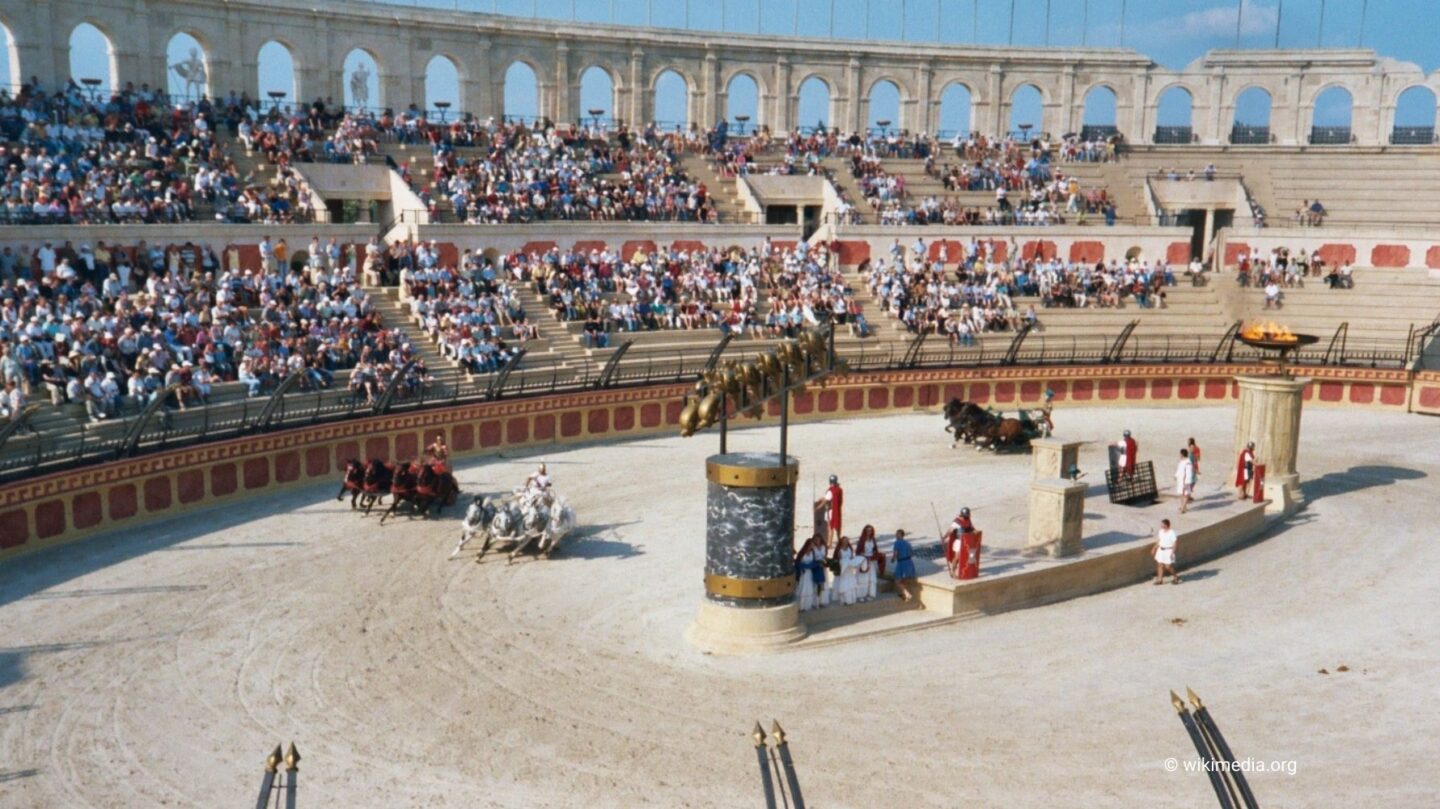A Thrilling Spectacle of Ancient Rome
Chariot racing was one of the most popular and dangerous sports in ancient Rome. Held in grand arenas like the Circus Maximus, it captivated citizens of all social classes, from commoners to emperors. With roaring crowds and high-stakes competition, these races were more than just entertainment—they were a reflection of Roman society’s love for speed, skill, and spectacle.
At its height, the Circus Maximus could accommodate over 150,000 spectators, making it one of the largest sports venues in history. The excitement of the races, combined with the dangers faced by charioteers, ensured that this sport became a defining feature of Roman culture.
The Teams and Factions
Chariot racing was dominated by four main teams, or “factions,” distinguished by their colors: the Reds, Blues, Greens, and Whites. These teams were more than just racing organizations; they were powerful entities with fanatical supporters. Fans often aligned themselves with a team, much like modern-day sports enthusiasts support their favorite clubs.
The rivalry between factions could become heated, leading to riots and clashes both in and outside the arena. The Greens and Blues were the most popular and fierce competitors, with their races sometimes serving as a proxy for political or social conflicts.
The Life of a Charioteer
Charioteers, known as aurigae, were the stars of the sport, though their lives were fraught with danger. Most began their careers as slaves or freedmen, hoping to win their freedom or achieve wealth and fame. Despite the risks, successful charioteers could amass immense fortunes, often rivaling the earnings of modern-day athletes.
Races were perilous, with tight turns around the spina (the central barrier of the racetrack) causing frequent crashes, known as naufragia. The lightweight wooden chariots offered little protection, and being thrown from a chariot or trampled by horses was a constant threat. However, this danger only heightened the spectacle for the bloodthirsty Roman crowds.
One of the most famous charioteers in history was Gaius Appuleius Diocles, who reportedly won over 1,400 races and accumulated immense wealth, making him a celebrity in his time.
The Horses: The True Stars of the Arena
The chariots themselves were pulled by teams of two, four, or even six horses, with four-horse chariots (quadrigas) being the most common and prestigious. These horses were meticulously trained for speed and endurance, and their care was of utmost importance. Certain breeds, such as the North African Barb and Spanish horses, were highly prized for their strength and agility.
Horses, like their drivers, could achieve legendary status. Their names were often inscribed on monuments or recorded in history, showcasing their importance in the races.
The Cultural and Political Impact of Racing
Chariot racing was not just a sport—it was also a political tool. Emperors often used the races to curry favor with the public, hosting lavish games and distributing free food or money to attendees. The races served as a form of mass entertainment that helped distract the populace from political instability or economic hardships, following the principle of bread and circuses.
Additionally, the sport showcased Roman engineering prowess. The Circus Maximus, with its advanced track design and capacity for massive crowds, symbolized Rome’s architectural and organizational skills.
A Legacy of Speed and Danger
Though chariot racing declined with the fall of the Roman Empire, its legacy lives on in modern sports and cinema. Films like Ben-Hur immortalize the drama and excitement of the races, giving contemporary audiences a glimpse into this thrilling world.
Chariot racing was more than a sport—it was a testament to Roman ingenuity, ambition, and love for spectacle. The secrets of this dangerous and exhilarating tradition remind us of a time when the roar of the crowd and the pounding of hooves echoed through one of history’s greatest empires.
